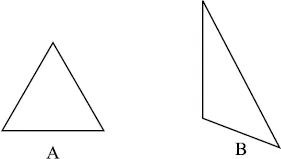
Molecular Symmetry and Group Theory
A Programmed Introduction to Chemical Applications
- English
- ePUB (mobile friendly)
- Available on iOS & Android
About this book
This substantially revised and expanded new edition of the bestselling textbook, addresses the difficulties that can arise with the mathematics that underpins the study of symmetry, and acknowledges that group theory can be a complex concept for students to grasp.
Written in a clear, concise manner, the author introduces a series of programmes that help students learn at their own pace and enable to them understand the subject fully. Readers are taken through a series of carefully constructed exercises, designed to simplify the mathematics and give them a full understanding of how this relates to the chemistry.
This second edition contains a new chapter on the projection operator method. This is used to calculate the form of the normal modes of vibration of a molecule and the normalised wave functions of hybrid orbitals or molecular orbitals.
The features of this book include:
- A concise, gentle introduction to symmetry and group theory
- Takes a programmed learning approach
- New material on projection operators, and the calcultaion of normal modes of vibration and normalised wave functions of orbitals
This book is suitable for all students of chemistry taking a first course in symmetry and group theory.
Frequently asked questions
- Essential is ideal for learners and professionals who enjoy exploring a wide range of subjects. Access the Essential Library with 800,000+ trusted titles and best-sellers across business, personal growth, and the humanities. Includes unlimited reading time and Standard Read Aloud voice.
- Complete: Perfect for advanced learners and researchers needing full, unrestricted access. Unlock 1.4M+ books across hundreds of subjects, including academic and specialized titles. The Complete Plan also includes advanced features like Premium Read Aloud and Research Assistant.
Please note we cannot support devices running on iOS 13 and Android 7 or earlier. Learn more about using the app.
Information
Programme 1
Symmetry Elements and Operations
Objectives
Assumed Knowledge
Symmetry Elements and Operations
















Table of contents
- Cover
- Contents
- Title Page
- Copyright
- Preface to the Second Edition
- How to use the Programmes
- Programme 1: Symmetry Elements and Operations
- Programme 2: Point Groups
- Programme 3: Non-degenerate Representations
- Programme 4: Matrices
- Programme 5: Degenerate Representations
- Programme 6: Applications to Chemical Bonding
- Programme 7: Applications to Molecular Vibration
- Programme 8: Linear Combinations
- Bibliography
- Mathematical Data for use with Character Tables
- Character Tables for Chemically Important Symmetry Groups
- Index